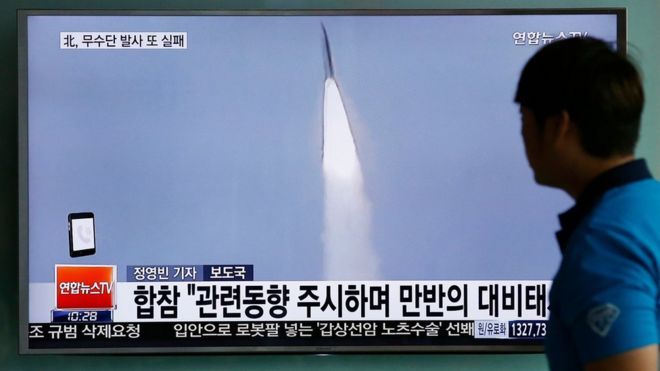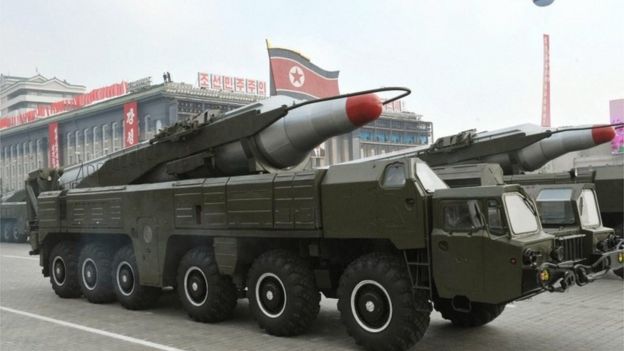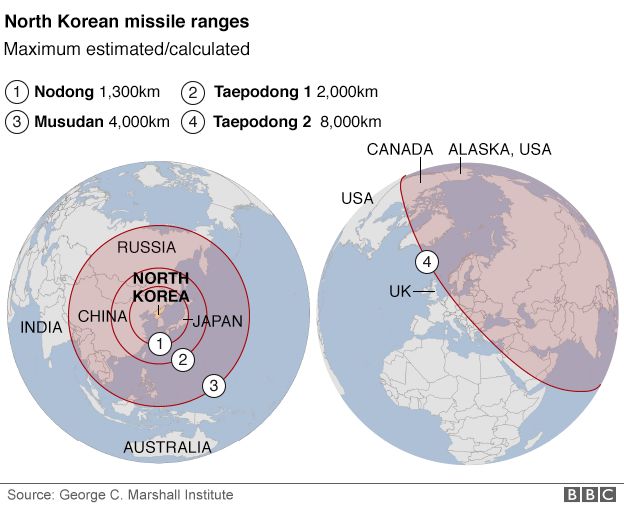North Korea has test-fired two mid-range ballistic missiles from its eastern coast, says South Korea.
The first launch was considered to have failed, travelling about 150km (90 miles) before landing in the sea.But the second, launched hours later, flew about 400km and reached an altitude of 1,000km, the most effective test to date.
A confirmed successful test would mark a step forward for North Korea after four failed launches in recent months.
Both launches are believed to have been intermediate-range Musudan missiles.
South Korea's Joint Chiefs of Staff said Seoul and the US were "carrying out an in-depth analysis" of the second missile, and did not say whether it was considered a success.
North Korea, which is developing nuclear weapons, is banned by UN resolutions from any use of ballistic missile technology.
It seems to have gone about 400km, far short of its maximum range. That may be because it failed or it may be because a decision was taken not to send it over Japan which had said it would shoot any missile down.
So why is North Korea conducting tests so frequently?
Some Western scientists say that the more conventional way of testing is to conduct the test, and if it fails, to go away and work out why before trying again some months or even a year later.
If this steady method over a long period isn't being followed by North Korea, it may be because of intense pressure from the top, a pressure the scientists on the ground will no doubt feel.



No comments:
Post a Comment